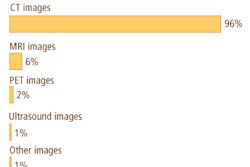If you have ever suffered from back pain or injury, you are not alone. More than 65 million people in the U.S. are afflicted with back pain each year. There are many causes of back pain: muscle strain, trauma, overuse, muscular disorders, nerve root pressure, poor posture, acute disk herniation, and other maladies. Back injuries can happen at any time -- playing sports, at work, or a simple accident almost anywhere. In addition some professions, such as construction or a job requiring repetitive lifting, and conditions such as pregnancy increase the risk of back pain.
Most patients with acute low-back pain improve with conservative management and do not require immediate diagnostic studies. Unless it is injury-related, most acute back pain heals in four to six weeks. However, if back pain persists longer than six weeks, further diagnosis and treatment is necessary.
A comprehensive history and physical examination can identify the small percentage of patients with serious conditions that require immediate further evaluation. These conditions include infection, malignancy, rheumatologic diseases, and neurological disorders. A substantial number of women may suffer from osteoporotic-related spine fractures that can be very debilitating. The possibility of referred pain from other organ systems should also be considered.
Conventional treatment is usually the prescription of pain medication and bed rest; however, more treatment protocols are calling for vertebroplasty and kyphoplasty. Epidural steroid injections and nerve blocks are also very common in pain-management clinics.
Several specialties treat back pain: physiatrists, chiropractors, pain-management anesthesiologists, orthopedists, neurologists, neurosurgeons, and interventional radiologists. In January 2002, the U.S. Centers for Medicare and Medicaid Services (CMS) recognized a specialty designation, 72, for pain-management physicians -- more for tracking purposes than for reimbursement.
According to physicians, even with x-ray, CT, or MR scans, a definitive diagnosis is not simple. The cause of back pain could be different for each patient, and at times the cause may have no relationship to the findings of the diagnostic exam. For these reasons, the proper ICD-9-CM for initial diagnostic tests has to be very careful chosen. Refer to the CMS Carriers Manual, Part 3, Chapter XV, and section 15021.1 for ICD-9-CM coding for diagnostic tests.
While the diagnosis may begin with simple x-rays, many times the patient has a CT or MRI scan as part of their diagnostic workup. The procedural coding structure is as follows.
Diagnostic procedures
72010 Radiological examination, spine, entire view, survey study, AP and lateral; per CPT Asst May 02:18.
A survey study is commonly performed to obtain scoliosis measurements or evaluate spine metastasis. This radiological examination involves obtaining anteroposterior (AP) and lateral views of the entire spine.
The number of films required varies depending on the equipment and patient. For an adult patient, the study may require six films (two each for AP and lateral views of the cervical, thoracic, and lumbar spine). For smaller patients (such as a pediatric patient), it may be possible to obtain AP and lateral views of the entire spine with fewer films. These films are then interpreted as a single study (i.e., one interpretation of all the films).
According to the American College of Radiology (ACR), 72010 can also be used for a trauma survey. When and if an abnormality is detected, at any level, a more detailed study may be warranted.
72020 Radiological examination, spine, specify level
This single view study is commonly performed in ER or trauma centers. However, be careful of the correct coding initiative (CCI) edits when this study is followed by multiple view studies as describe in the following codes:
The CPT codes for the cervical spine:
- 72040 (cervical spine, two or three views)
- 72050 (cervical spine, minimum of four views)
- 72052 (complete study of cervical spine)
A Davis series of the cervical spine means a complete study and generally involves seven views.
The CPT codes for the thoracic spine:
- 72070 (thoracic spine, two views)
- 72072 (thoracic spine, three views)
- 72074 (thoracic spine, minimum of four views)
The CPT codes for the lumbosacral spine:
- 72100 (lumbosacral, two or three views)
- 72110 (minimum of four views)
- 72114 (complete)
CT and MR imaging of the spine
The CPT codes for CT of the spine:
- 72125 to 72126 for cervical spine
- 72127 to 72129 for thoracic spine
- 72131 to 72133 for lumbar spine
The CPT codes for MRI of the spine:
- 72141, 72142, and 72157 for cervical spine
- 72146, 72147, and 72157 for thoracic spine
- 72148, 72149, and 72158 for lumbar spine
Refer to the CPT book for a detailed description of the above mentioned codes.
Both CT and MRI have strict payment polices with regard to medical necessity. These modalities are governed by local coverage determination (LCD) under individual carrier for Medicare Part B.
Therapeutic procedures -- vertebroplasty
Vertebroplasty is a minimally invasive procedure for treating compression fractures in the spine, typically performed by an interventional radiologist. Using fluoroscopic or CT guidance, the interventional radiologist passes a large-gauge needle into the vertebral body. The needle placement is confirmed by injecting iodinated contrast, followed by liquid cement, polymethylmethacrylate (PMMA). Once injected, it generally takes 10 to 20 minutes to harden.
CPT codes:
- 22520 -- percutaneous vertebroplasty, one vertebral body, unilateral or bilateral injection; thoracic
- 22521 -- percutaneous vertebroplasty, one vertebral body, unilateral or bilateral injection; lumbar
- 22522 -- each additional thoracic or lumbar vertebral body (list separately in addition to code for primary procedure)
- 76012 -- radiological supervision and interpretation, percutaneous vertebroplasty, per vertebral body, under fluoroscopic guidance
- 76013 -- radiological supervision and interpretation, percutaneous vertebroplasty, per vertebral body, under CT guidance
Therapeutic procedures -- kyphoplasty
Kyphoplasty involves inserting specialized tubes into the fractured vertebra through two small skin openings in the back. This procedure is done under guidance by x-ray imaging to allow precise placement.
Through each tube, a special balloon is inserted into the collapsed vertebra. Once the balloons are in place, they are sequentially inflated with a liquid, using x-ray guidance, with the goal of re-establishing the original height of the collapsed vertebra.
The balloons are then deflated, leaving an empty cavity within the bone that has been expanded.
At this stage, highly viscous bone cement is inserted into the vertebra through both tubes, using x-ray guidance to ensure that the cement is not leaking out of the vertebra. The cement hardens within minutes.
CPT codes:
- 22899 -- for each vertebral body, unilateral or bilateral injection; if more than one level is treated, the multiple surgery rules will apply
- 76499 -- unlisted diagnostic radiographic procedure (to be used for radiological supervision and interpretation, kyphoplasty under fluoroscopic or CT guidance)
Both vertebroplasty and kyphoplasty have a 10-day global period. Look for new codes 22523, 22524, and 22525 for kyphoplasty in 2006
Therapeutic procedures -- intradiskal electrothermal therapy (annuloplasty)
For this procedure, the physician uses a fluoroscope to see the spinal structures. A hollow needle is inserted into the disk. A thin heating wire (electrothermal catheter) is passed through the needle into the disk, and maneuvered into place around the outer edge of the central nucleus.
The wire is then slowly heated to a temperature of about 194º F (90º C) for about 15 minutes. Heat can potentially contract and shrink the fibers that make up the disk wall, closing any tears. The heat can also potentially cauterize (burn) tiny nerve endings in the disk, making them less sensitive to pain.
After the wire and needle are removed, there is a short observation period before the patient is released.
CPT codes, Category III codes for 2005 (may not change for 2006):
- 0062T -- percutaneous intradiskal annuloplasty, any method, unilateral or bilateral including fluoroscopic guidance single level
- + 0063T -- one or more additional levels
For CT or MRI guidance and localization for needle placement and annuloplasty in conjunction with 0062T and 0063T, see codes 76360 and 76393.
Future of interventional procedures in back pain relief
More and more interventional procedures are expected to be performed for back treatment, including spinal fusions and disk replacements. When and how the healthcare industry decides to adopt these procedures will depend on public awareness and education.
By Deepa Malhotra
AuntMinnie.com contributing writer
November 8, 2005
Deepa Malhotra is president of Chicago-based Health Care Educational Resource Services (HERS), a radiology business, auditing, coding, education, certification, and denial-management consulting group. The firm can be contacted at (630) 236-4212 or (630) 272-4720, or via e-mail at [email protected].
Related Reading
CMS sets final date for HIPAA TCS compliance, August 5, 2005
New CPT codes set for coronary CT angiography, July 26, 2005
CMS provides details on new PET coverage, April 8, 2005
HIPAA TCS standards provide business intelligence opportunities, February 17, 2005
VC billing: Still hazy after all these years, November 19, 2004
Copyright © 2005 Health Care Educational Resource Services



















